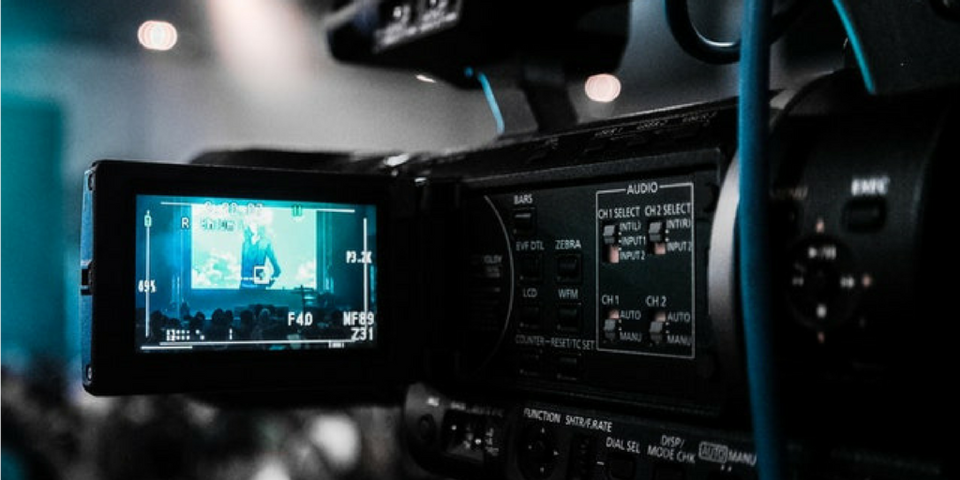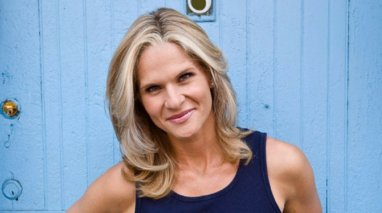When to Consider a Satellite Media Tour

Posted By Sue Parente on November 16, 2017
The when and how satellite media tours (SMTs) work best is still a mystery to many marketers. Are they just for the big household brand names? Do they ever work for BtoB companies? How exactly do they work? I connected with seasoned broadcast professional and SMT producer Laura DeAngelis recently to get her take on some of these questions.
Q: Tell us a little bit about how SMTs generally work?
Satellite media tours provide a great opportunity for companies to get their message out to a wide audience in a matter of several hours—and the spokesperson never has to move! There are a wide range of tasks for producing SMTs, which starts with a conversation with the client to determine how to craft a message into a consumer-friendly news-you-can-use segment. That message is then whittled down into a one-page media alert that is then used to pitch TV stations around the country.
While the pitching is underway, other important elements of the tour are decided: Will the interviews be conducted from a studio or a remote location? Does this topic involve something like a cooking demo or is it a straight "talking head" interview with a streamlined background? Will a product be displayed on the set and/or is there any b-roll to bring any of the talking points to life?
Once the tour date arrives, there may be a load in to set up the cameras and other set elements along with media training for the spokesperson. On the actual SMT day, I'll arrive with the crew anywhere from one to three hours before the first interview. The spokesperson usually arrives about an hour to 45 minutes before the start for makeup and a couple of practice runs before "kickoff." Once we're off and running, it's my job to make sure we stay on schedule so that the 7 am interview ends on time for the next one happening at 7:05 or 7:10 am and so on and so on until the end of the tour.
While managing the stations via several phone lines, I also communicate with the spokesperson so he or she knows the city, host's name and how long each interview is before they get started. Of course, I'm constantly communicating with who's in the control room with me or sitting the satellite truck to make sure we're capturing any visuals needed or rolling video at the appropriate times. Last, but certainly not least, I also do my best to keep the client team aware of any changes in the schedule.
I've been producing SMTs since 2005 and the one thing that never ceases to amaze me is whether the tour is a two-hour sprint or five-hour marathon, there's always a collective "whoo hoo!" from the crew and client team alike when I offer the final "that's a wrap!" over the speaker system.
Q: What are the opportunities or story angles that tend to work best for an SMT?
As a former broadcast journalist, I always try to encourage clients to think of an angle that's as close to a feature story as possible. Many times that can happen by simply looking at what's going on in the news, which ends up being pretty cyclical. For example, the holidays are almost here: It's a great time for brands in the food or entertaining industry to team up with an expert on how to create memorable recipes or the best party ever. It also seems like on nearly all of the 365 days of the year, there's either a holiday or some sort of global awareness day that could provide a hook for a variety of brands.
Whether it's raising awareness for a disease or a disorder or celebrating the invention of ice cream, the calendar seems to provide a hook for so many opportunities. For example, some pharmaceutical companies may consider using a cancer awareness month to talk about new clinical trials underway in certain areas where they're looking for patients. On the flip side, a food or beverage brand may want to take advantage of Cinco de Mayo to offer tips on planning the perfect party.
Q: What are the key elements needed to make it really successful?
In addition to having a timely message, a solid tour will offer an expert who knows his or her field and some great visuals. One of my most memorable tours was a remote SMT at the World Championship of BBQ Cooking Contest at the Memphis in May festival where celebrity pit masters Moe Cason and Tuffy Stone offered tips for a great grilling season. That tour had everything—a food-filled set from an annual event and two cool spokespeople to keep things light and fun—with only a few brand mentions thrown in. And that's a very important key—you have to limit your visual and verbal brand mentions to just a couple because you don't want to risk any station thinking the segment is simply too commercial. One final note to that point: Having a non-branded call to action is always welcome by stations. In other words, directing viewers to something like kickcoldseason.com will resonate better than a brand name's website.
Q: Are SMTs only for big consumer-facing brands or have you seen them work for companies of all sizes and market segments? (If the latter, can you offer some examples to illustrate?)
SMTs can work for a variety of brands in all shapes and sizes. While I've worked with well-known companies including Allstate, Ally Bank, and Smithfield Foods, SMTs can also help build brand recognition for lesser known organizations. For example, this past summer, everyone had solar eclipse fever. The American Society of Retina Specialists (ASRS) used the highly-anticipated event as an opportunity to put one of their top specialists in the SMT "hot seat." The doctor was able to provide expert advice to people around the country on how to safely watch this amazing event while raising awareness about the existence of the organization.
Q: What does the typical reach of an SMT look like?
Depending on how many hours we have the spokesperson, an SMT schedule can contain anywhere from 15-30 interviews. It's important to note those interviews will most likely include some radio interviews, as well. If you have some nationally syndicated shows on that schedule, you can end up reaching an audience in the millions.
Q: What should a brand expect in terms of time and cost investment?
It's important for a brand to realize they need to allow lead time to plan a successful SMT. Movie stars talking about the release of the latest summer blockbuster will always book with little lead time, but if you're trying to reach consumers on a local newscast, you want at least four weeks to book a solid SMT lineup. From the pre-game leading up to the first official pitch day to the SMT, there can be several months of work involved. But even when tasked with only two to three weeks to produce a tour, the key will always be developing a segment that offers something helpful to someone in your family or your best friend. At a time when there's an abundance of troubling events making headlines, those news-you-can-use features often offer a bright spot in an otherwise sobering lineup.
About Laura
Laura DeAngelis is currently a freelancer with 20 years of media experience as an award-winning broadcast journalist and producer in corporate communications. Her career includes a seven-year stint as host of the nationally syndicated Health and Home Report, along with reporter/anchor positions at the News 12 Networks and WLFI-TV in Lafayette, IN. During her broadcast career, Laura won several Telly Awards, a first-place win for in-depth reporting from the Connecticut Society of Professional Journalists and received several Emmy nominations from the Boston/New England chapter of the National Television Academy. In her free time, the Northwestern University graduate enjoys working out, writing her blog LauraLovesFitness.com and cheering for the Yankees. You can follow Laura on Twitter and Instagram at @FitnessLaura.




